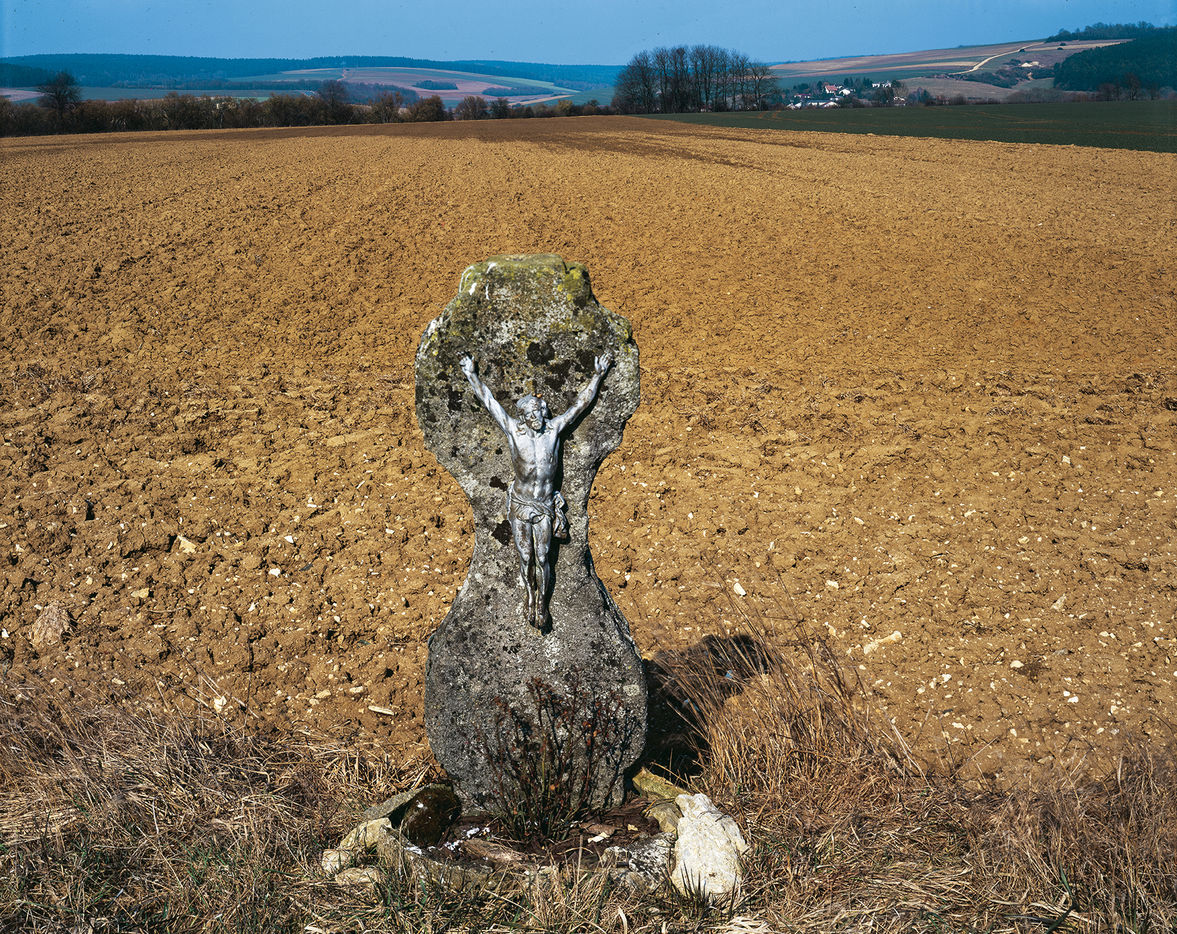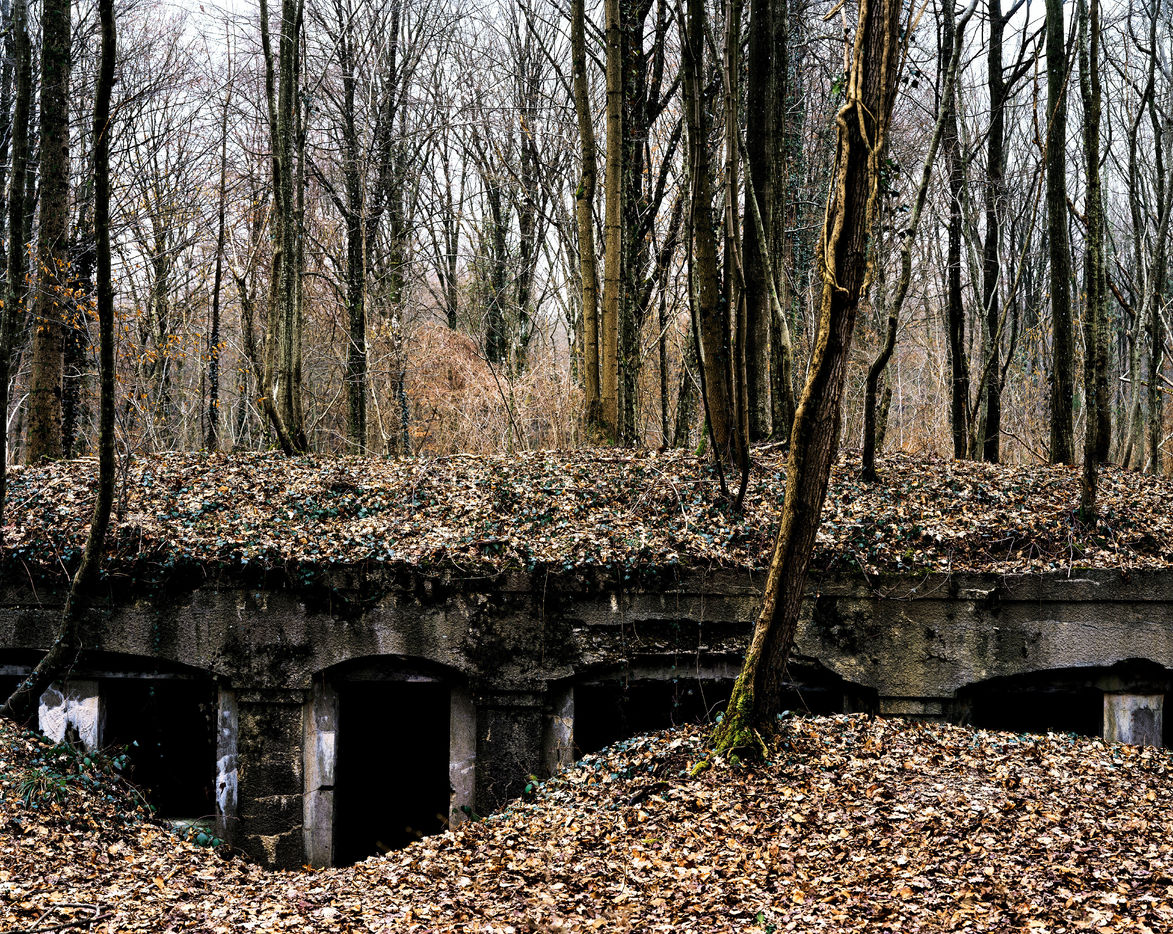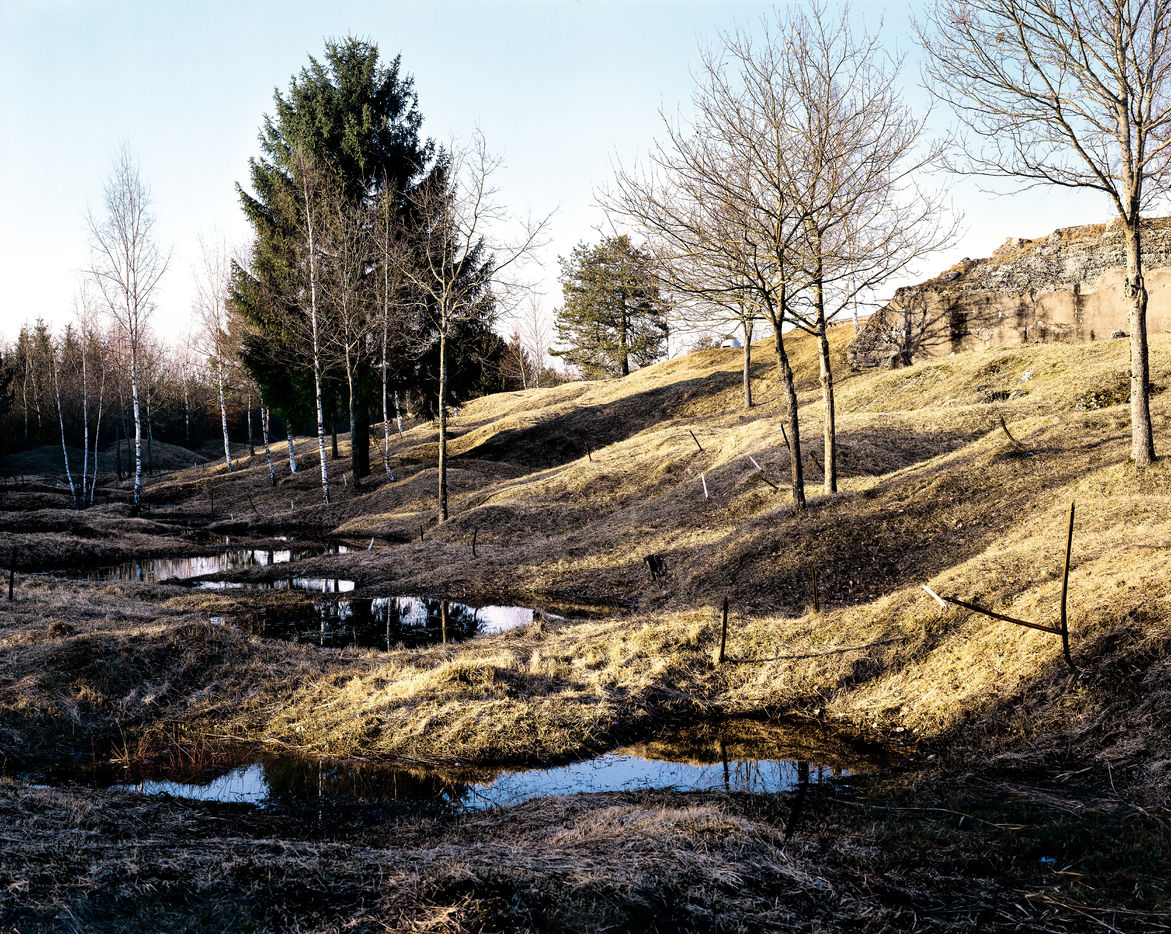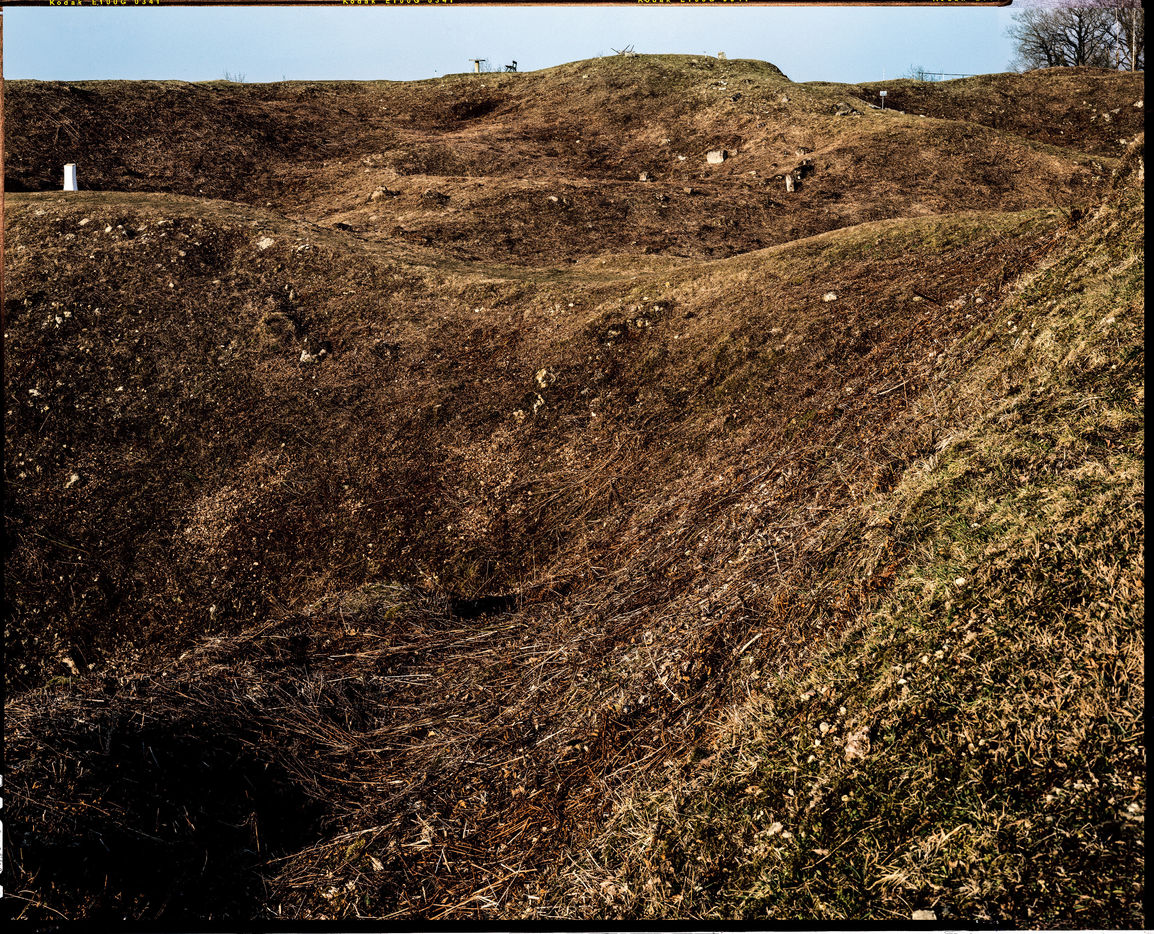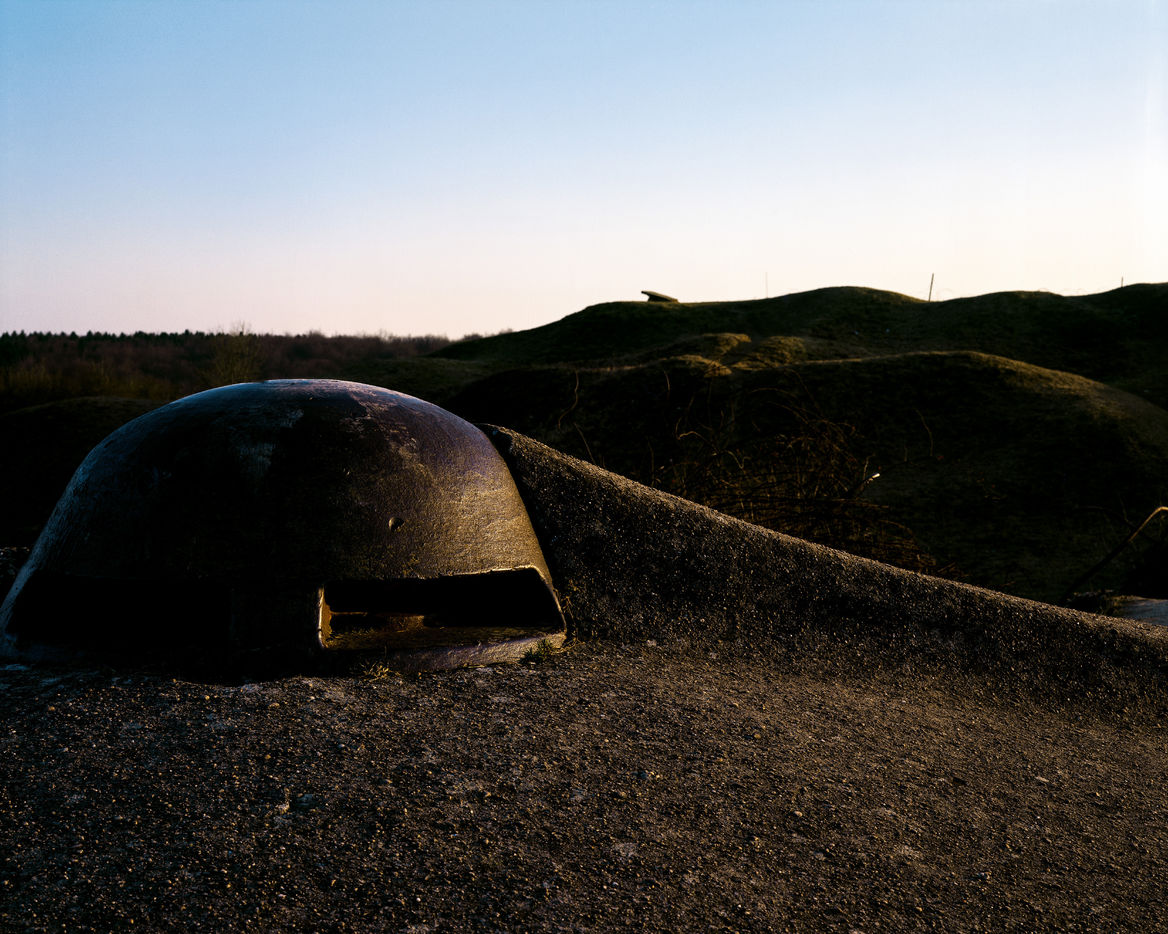Pour accéder à la série en entier, vous devez vous logger ou demander un compte Hans Lucas en cliquant ici.
Champs de bataille - Verdun
« Pourquoi et comment photographier la guerre ?
Volonté d'informer, de participer au mouvement de l'histoire ? Comment raconter l'inracontable - les images d'horreur succèdent aux images d'horreur. La spectacularisation du monde par la télévision, la presse, Internet et l'information en temps réel ont entamé notre capital d'empathie et notre faculté à nous émouvoir du malheur des autres.
En 2004, avec une chambre photographique Deardorff 20 × 25, je commençais une série sur les lieux de batailles. Ces lieux racontaient-ils encore l'histoire ?
Sans céder à l'émotion brute, je voulais m'adresser à la conscience, montrer par des paysages parfois anodins une "géographie" de la démence humaine.
Je recherchais une autre manière de témoigner d'une réflexion sur l'image et de la réalité de la guerre. J'ai commencé à photographier les champs de bataille de France, les plages du débarquement, puis ceux de l'Europe, notre famille qui s'est si souvent déchirée. Mon projet est ambitieux : montrer la terre sur laquelle les hommes se sont battus, raconter l'histoire, réfléchir sur cette pensée d'Héraclite :
"Conflit / est le père de tous les êtres, le roi de tous les êtres / Aux uns il a donné forme de dieux, aux autres d'hommes, / Il a fait les uns esclave, les autres libres." (Fragment 53) "Il faut connaître / que le conflit est commun [ou universel] / que la discorde est le droit / et que toutes choses naissent et meurent selon discorde et nécessité." (Fragment 80)
J'ai parcouru les champs de bataille d'Europe et de l'océan Pacifique, d'Afrique, d'Amérique, d'Asie. Certains sites sont dûment répertoriés, balisés, d'autres méritent un travail minutieux d'enquête et de localisation - certains États ne semblent pas désireux de commémorer les défaites ou bien sont amnésiques... »
Yan Morvan
Battlefields - Verdun
"Why and how to photograph the war?
Do we want to inform, to participate in the movement of history? How to tell the unmentionable - images of horror follow images of horror. The spectacularisation of the world by television, the press, the Internet and real-time information has eroded our capital of empathy and our ability to be moved by the misfortune of others.
In 2004, with a Deardorff 20 × 25 camera, I started a series on battlefields. Did these places still tell the story?
Without giving in to raw emotion, I wanted to address the conscience, to show, through landscapes that are sometimes insignificant, a "geography" of human madness.
I was looking for another way to bear witness to a reflection on the image and the reality of war. I started to photograph the battlefields of France, the beaches of the D-Day landings, then those of Europe, our family which has so often been torn apart. My project is ambitious: to show the land on which men fought, to tell the story, to reflect on this thought of Heraclitus:
"Conflict / is the father of all beings, the king of all beings / To some he gave form to gods, to others to men, / He made some slave, others free." (Fragment 53) "It must be known / That conflict is common [or universal] / That discord is right / And that all things are born and die according to discord and necessity." (Fragment 80)
I have travelled the battlefields of Europe and the Pacific Ocean, Africa, America, Asia. Some sites are duly listed and marked out, others deserve a meticulous work of investigation and localization - some States do not seem to wish to commemorate defeats or are amnesic... "
Yan Morvan
